100% New Mexico Initiative
100% POWER HOUR
100% New Mexico: County Projects
PLEASE NOTE: This page contains supplemental information for attendees of the 100% New Mexico initiative Power Hours. Attendance is free, but registration is required. Please register here. This page also guides local readiness workshops for county initiatives.
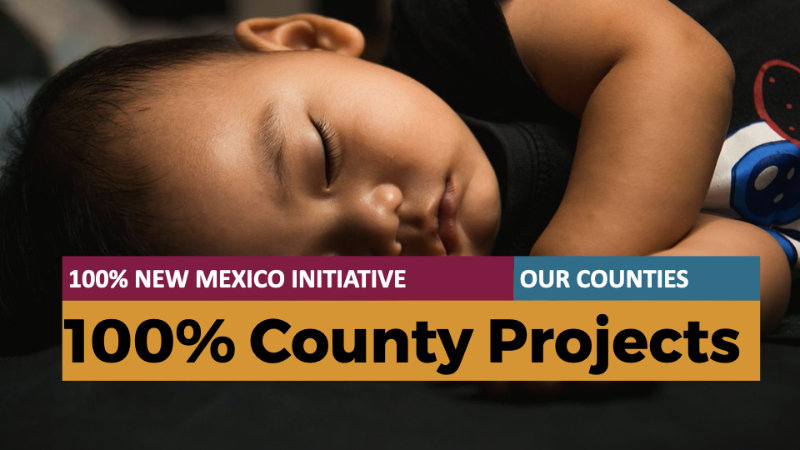
100% NEW MEXICO INITIATIVE: OUR COUNTIES
100% New Mexico County Projects
We are providing the slides and narrative text used in the 100% New Mexico County Projects webinar being offered by the Anna, Age Eight Institute. The webinar is designed to give 100% New Mexico initiative members an overview of key concepts and issues related to implementing the initiative in their county with a focus on strengthening the community schools model in each county. Currently ten counties are engaged in the initiative.
Webinar participants are encouraged to enroll in the 100% Power Hour webinar series for more background in the initiative. We also invite you to use this page for local presentations in order to increase public awareness of adverse childhood experiences (ACEs), trauma, social adversity and the data-driven prevention strategy of community schools.
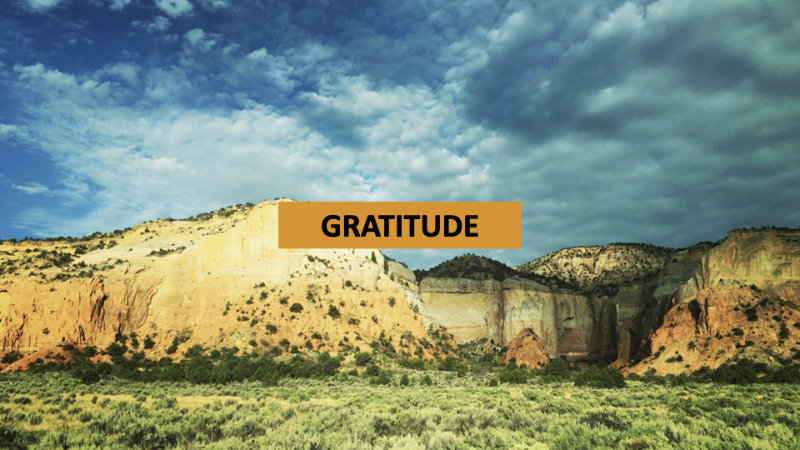
Before we begin our presentation, we want to allow for a moment of quiet reflection. Please take a minute to perform the self-care of your choice.

The learning objectives of the 100% New Mexico County Projects are that participants completing the webinar will be able to describe an overview of: the 100% New Mexico initiative, health and safety challenges students endure; the impact of ACEs and trauma; the impact of social adversity on families, schools and community; the initiative key strategies; the overview of county projects; and getting started.
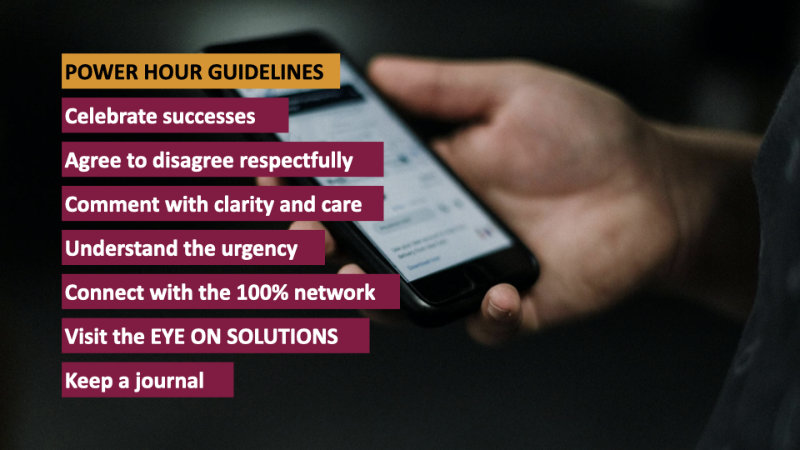
Participant Guidelines: The 100% Power Hour process is designed to create a vehicle for building awareness of the initiative and serve as a catalyst for ongoing local community dialogue. The presentation design follows the “teach the teacher” format, developed to allow participants to provide the presentation to their initiative members and local stakeholders. To create an environment for community dialogue, we offer simple guidelines.
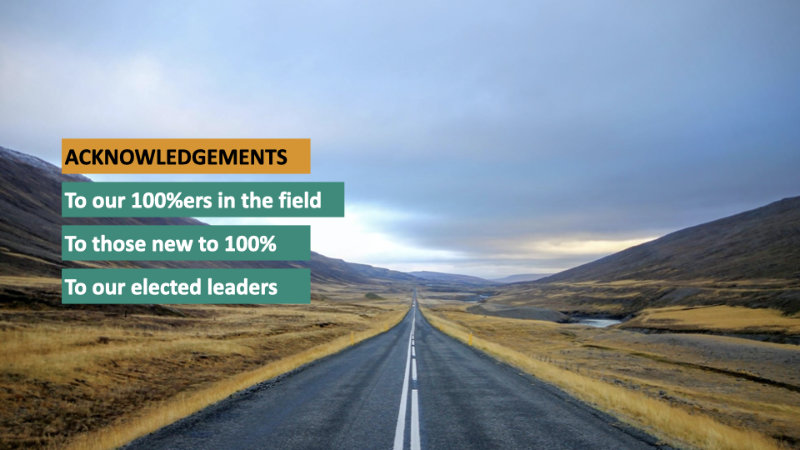
Acknowledgements: We acknowledge the contribution of all initiative members across the state who have been part of the iterative process of developing the 100% New Mexico initiative to meet the unique needs of rural and urban families, as well as those serving culturally and economically diverse populations in the south and west. We also are grateful to the state and local lawmakers who have supported the initiative.

PART ONE: 100% New Mexico initiative: Challenges and Solutions
The 100% New Mexico initiative, like many health initiatives across the state and country, seeks to prevent the costly challenges that diminish the lives of children, students and adults. We don’t lack data that documents our students’ health and safety challenges. Every state department of health provides data on the incidence of illness, injury and violence, along with reports that detail our students’ troubling experiences with challenges outside the home. We don’t lack data to illustrate how many of our students are struggling with schoolwork or dropping out. We know the risk for ongoing substance use disorders, violence, untreated mental health challenges and joblessness.
We are united in ensuring that 100% of county residents have access to the ten vital services for surviving and thriving. This presentation will provide an overview of one of the three key strategies for empowering students and families called the community schools model.
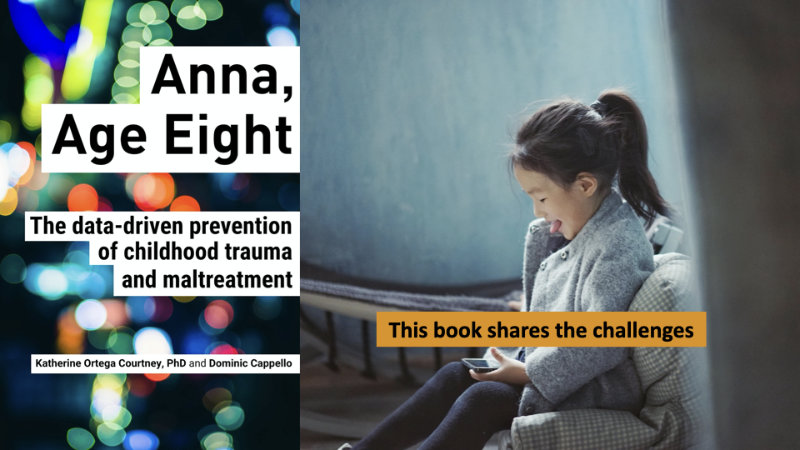
The 100% New Mexico initiative is the centerpiece of the Anna, Age Eight Institute’s programming. It was developed by institute co-directors Katherine Ortega Courtney, PhD and Dominic Cappello who are the co-authors of Anna, Age Eight and 100% Community.
Anna, Age Eight: The data-driven prevention of childhood trauma and maltreatment guides communities in addressing epidemic rates of adverse childhood experiences (ACEs) that occur in the home and social adversity that families face outside their door. The book also addresses the role of schools in preventing adverse childhood experiences (ACEs) and trauma.
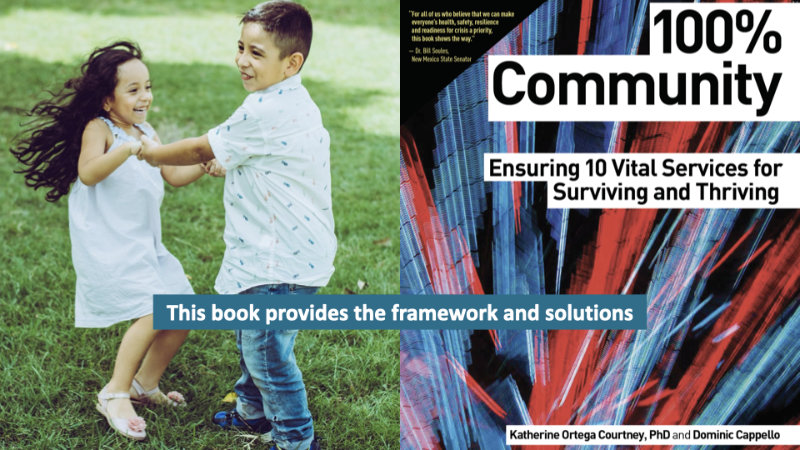
100% Community: Ensuring 10 vital services for surviving and thriving is the blueprint that 100% New Mexico initiative participants are using to assess barriers to vital service and build a countywide system of care that includes timely access to vital services. The book details how we collaborate to build the services in each county. One of the ten vital services would be a fully-resourced community school.
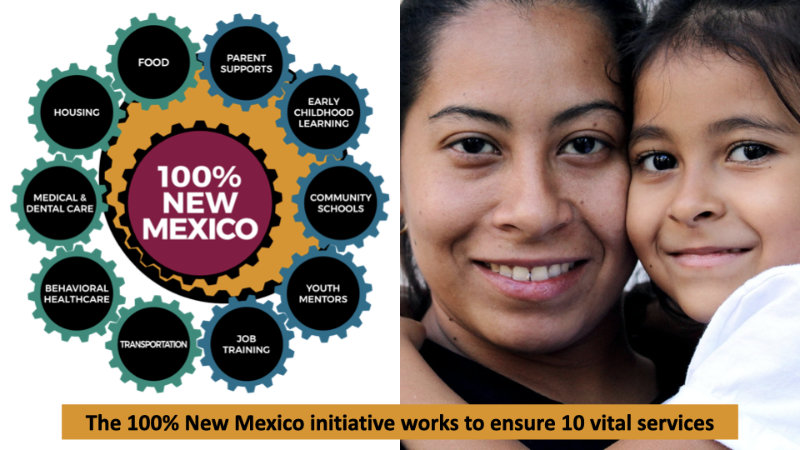
The 100% New Mexico initiative is working, county by county, to ensure the ten vital services for surviving and thriving. Our children, students and families can only struggle without these services shown to increase health, safety and resilience for residents of all ages. The initiative aligns the local work of county and city leaders committed to health equity and racial justice.
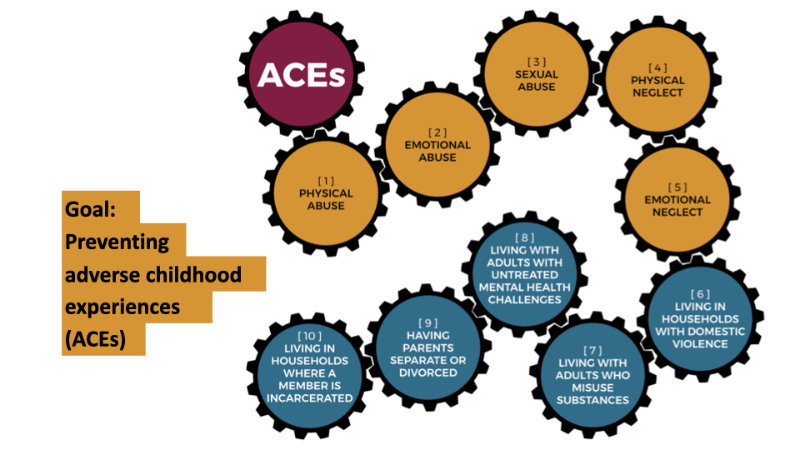
Adverse childhood experiences (ACEs) are ten forms of adversity, abuse and neglect that children endure in the home. As we begin, we wish to point out as many as a fourth to half our students are enduring the ten ACEs. Even those students who may be fortunate enough to score a 0 on the ten-question ACEs survey navigate a homelife, school and community of those with much higher scores.
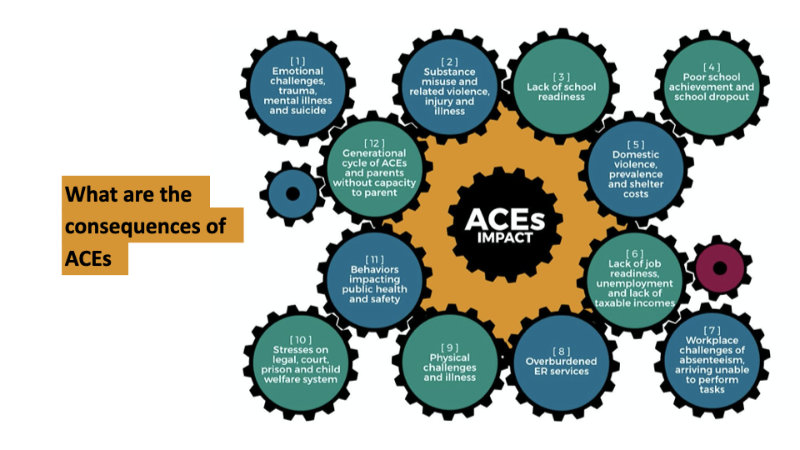
The impact of ACEs does not stay in the home. Almost all our costly health and social challenges can be traced back to ACEs, trauma and the ways people cope with damaged families. Adults with untreated trauma due to ACEs can struggle to learn, parent, work and become a contributing member of the community.
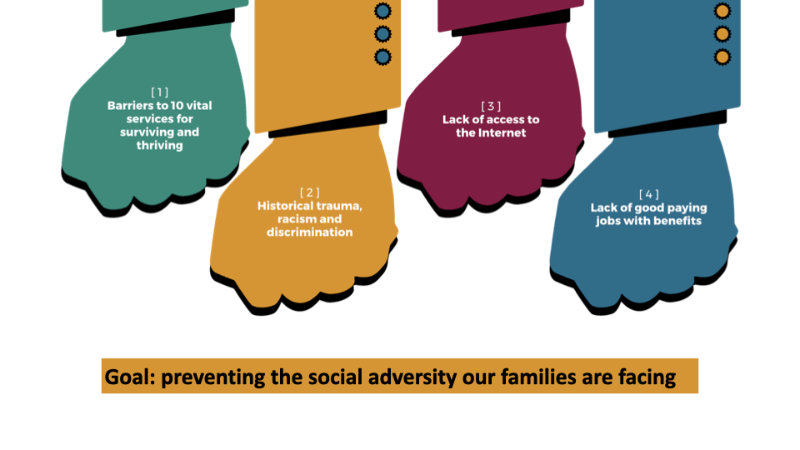
Social adversity arrives once one steps outside their door. Adversity in the form of service barriers, discimination, lack of access to the internet and living in areas without good paying jobs can diminish the lives of children, students, parents, caregiving grandparents and all county residents.
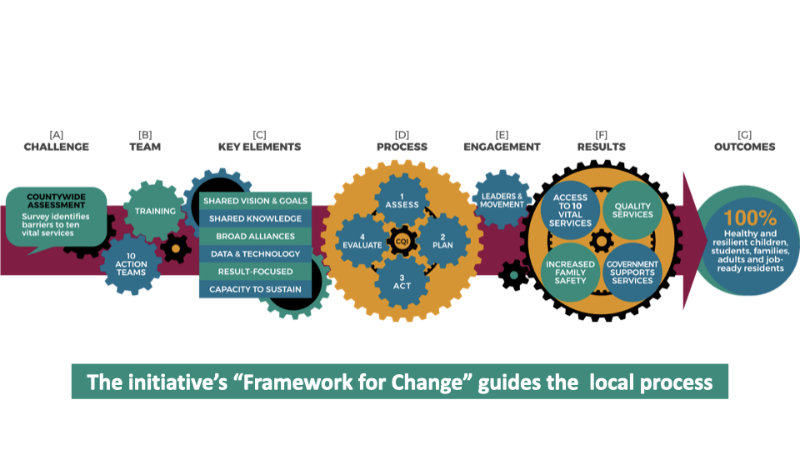
Our initiative is guided by a “Framework for Change.” In our “Framework for Change” action is the “D” part of the four-phase continuous quality improvement process. Action, including fundraising, is all part of the change process that leads us to “E” and engagement. This means leadership and a local movement committed to our desired result: 100% of our kids and families thrive.

The county initiative teams are building and strengthening relationships with a variety of partners on the state, county and city levels. The partners are key to securing funding and support for local 100% New Mexico projects.
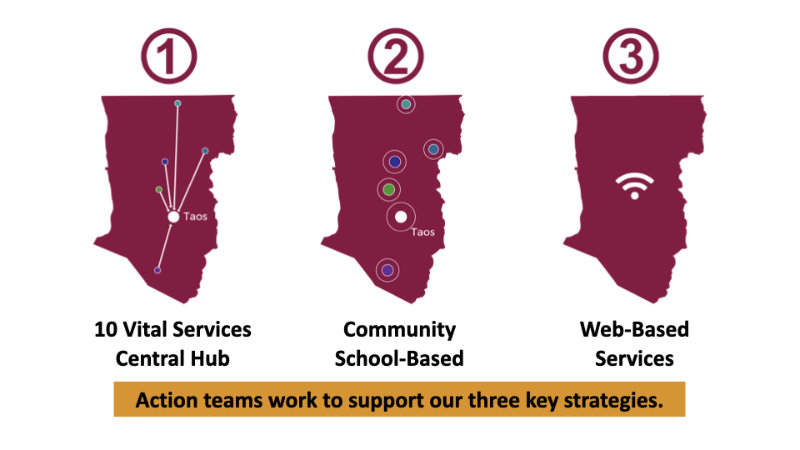
Change agents work on our three key strategies: 1) creating a 100% Family Center which is a “one-stop shop” and central hub for ten vital services, 2) making every school a fully-resourced community school which serves as a service hub with ten services, and 3) ensuring internet access across the county to make web-based services and supports a reality.

REFLECTION QUESTION: As you think about the problems and solutions presented in the initiative overview, take a few moments to reflect on the challenges New Mexico’s children and families residents endure.
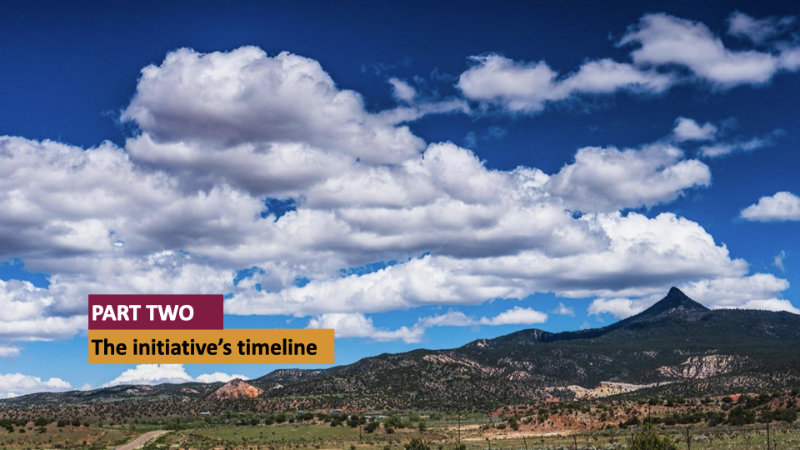
PART TWO: The initiative’s timeline
Our 100% New Mexico survey of parents and youth makes clear the disparities and adversity our resident’s endure. There are three strategies that can significantly increase access to the ten vital services for surviving and thriving across a county.

Part Two begins with a timeline showing how the Anna, Age Eight Institute and 100% New Mexico started and where it’s heading. The Institute, the sponsor of the initiative, was funded by the New Mexico state legislature in 2018. The number of counties engaged with the initiative continues to grow every year. The goal is to be engaged in counties representing 85% of the state’s population by 2022. By 2023, with support from the state legislature and each county’s local governments, we seek to develop 100% Family Centers serving as one-stop service hubs in each county’s main population centers with mobile services reaching all communities within a county’s borders.
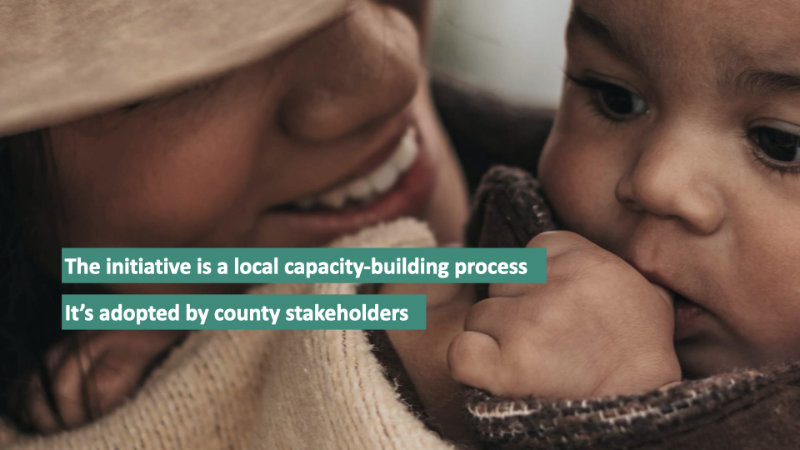
The 100% New Mexico initiative starts with local county stakeholders inviting the Anna, Age Eight Institute staff into their county to discuss how to start the initiative, assessing readiness and the capacity to mobilize leaders from ten service sectors to begin. The initiative begins with a 100% Community book club, a process that has been shown to create a shared vision of the initiative and its power to address ACEs, social adversity and barriers to ten vital services.

The initiative has seven steps that may be customized to meet the needs of a county. Step 1: Assess barriers to ten vital services through the 100% New Mexico survey.
Step 2: Analyze survey results to identify to what degree barriers to services exist and what the challenges are. The survey results are shared with all local elected leaders including city councilors, county commissioners, school board members, state lawmakers and leadership within ten service sectors and higher education.
Step 3: Assess local capacity of providers in the ten service sectors to meet the needs of residents and reduce barriers to their services across the county in each community within the county’s borders.
Step 4: Create the 100% Family Services Directory, a resource that is both a directory to ten vital services within the county and an assessment tool to identify the strength and breadth of local services. The initiative’s ten action teams monitor the services in their particular sector, identifying how residents rate services.
Step 5: Identify evidence-informed solutions to service barriers. Each county’s ten action teams focus on developing projects shown to reduce barriers and increase service access and quality of services. In this phase the county initiative assesses the capacity of the county to develop the 100% Family Center, a one stop service hub. The initiative’s “community schools” action team assesses the capacity of schools to become fully-resourced community schools with school-based health centers. The digital divide within the county is also assessed and projects identified to ensure internet access for 100% of county residents.
Step 6: Generate support from city and county government to support the initiative’s process of assessing, planning, action and evaluation of service access. The long-term goal is for city and county governments to allocate a percentage of their yearly budget to ensure the initiative’s sustainability.
Step 7: Evaluate progress. This is an internal review of the initiative’s action teams that measures their capacity to develop projects that reduce service barriers. This evaluation process can also measure local resident’s awareness of the initiative’s work and public awareness activities such as the 100% Mural Project.
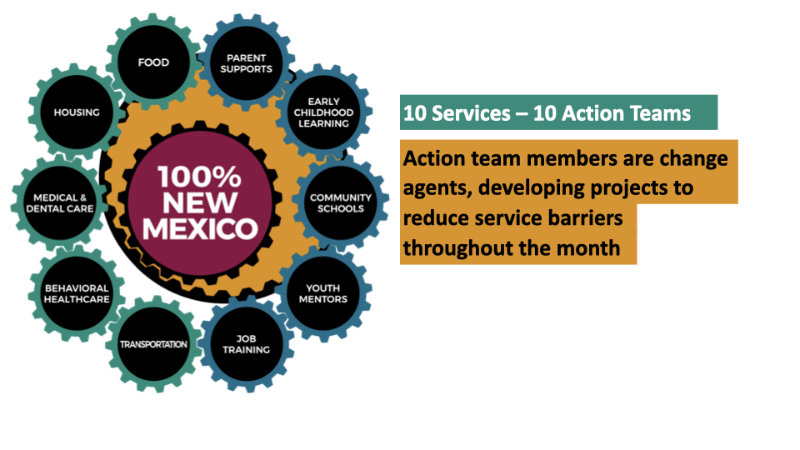
REFLECTION QUESTION: The ACEs study was published two decades ago. Social adversity was identified in research many decades before that. Why has it taken so long to develop a county strategy to address these two challenges?

Historical trauma and historical disparities are fields of study documenting centuries of social injustice and all the “isms” (such as racism) you’re familiar with to describe the unfair treatment of people. When we talk about community environments and who does or doesn’t have easy access to vital services, we will be talking about how one’s zip code can determine to a large degree one’s destiny. Disparities based on geographic location, is something written about in Anna, Age Eight: “Chapter 7: Why your zip code should not determine your destiny.” Historical Trauma is written about in 100% Community and details why each 100% New Mexico initiative has a Task Force on Historical Trauma and Historical Resilience. We explore how challenging it can be to address and discuss these concepts.
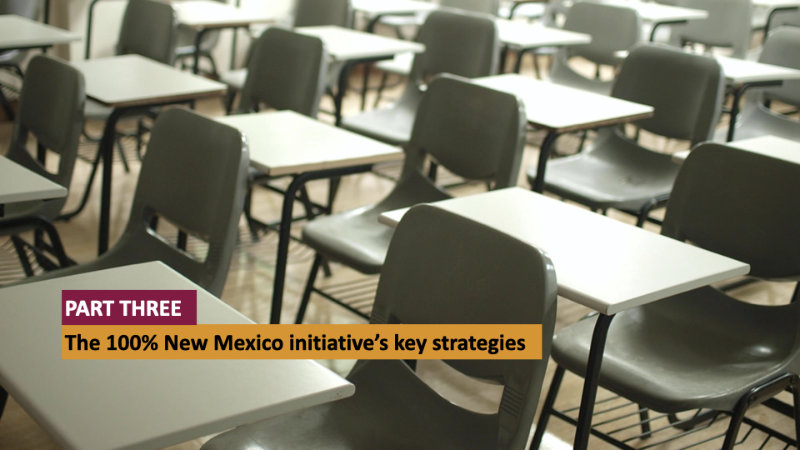
PART THREE: Frameworks guiding us
There are a number of models that guide the development and functioning of a community school. One model, promoted by the initiative, has five components:
- A full-time community schools director
- A school-based health center with medical, dental and mental health care
- Staff trained as navigators to link students and families to vital services
- Resourced with sustainable funding to be an academic and community activity center
- Students and families engaged in service learning and social engagement
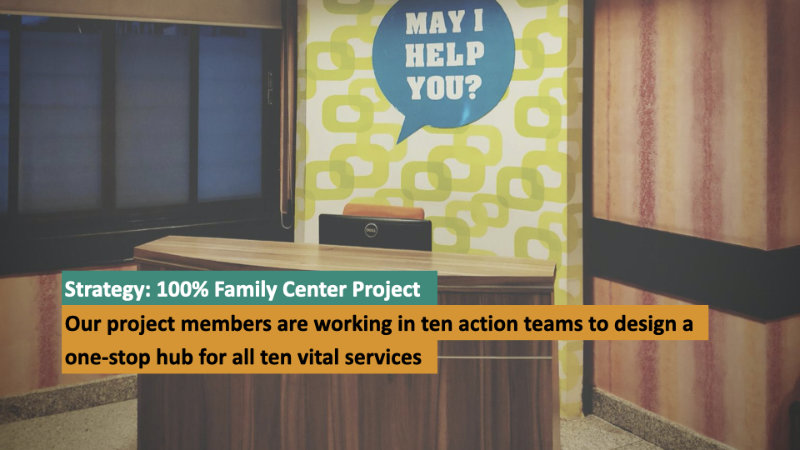
The 100% Family Center. This is a one-stop service hub providing access to the ten vital services for surviving and thriving. It is a place a parent can link to supports in one visit, rather than visiting ten different buildings. The Center has navigators to support all family members in connecting with the services they seek. In addition to being a home for providers representing ten service areas, the Center is also the homebase of the county-based 100% New Mexico initiative, working to increase the availability and quality of ten services.
Please view our Power Hour: 100% Family Centers
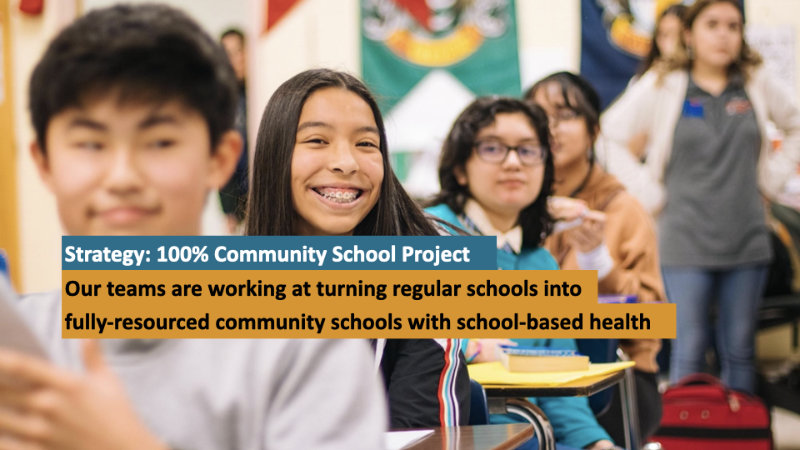
Community Schools. Decades of research identify schools as the best place to house family services, as it's an environment children and parents are already engaged with. The community school, unlike most public schools, is fully resourced, staffed and funded to remove barriers to vital services by providing school-based medical, dental and behavioral health care. The community school, with a full-time community school director, can bring to a school a food bank, clothing bank, parent supports, mentors and tutors. The entire school community is empowered by adopting the community schools model. Students get the support they need to achieve academically. Educators can focus on teaching and learning, while local providers meet health and safety needs. Local providers get a base from which to connect with students and family members, linking them to the services they can benefit from.
Please view our Power Hour: Community Schools@100%
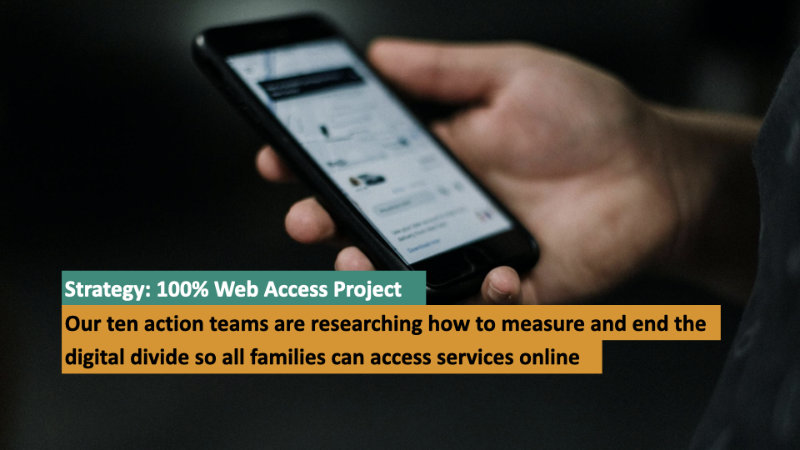
The 100% New Mexico initiative assesses the digital divide impacting all county residents. One of their tasks is to work with local government, state government, and public and private sector partnerships to bring internet access to all households. Given that most of the ten vital services have a web-based component, access to the internet is a key part of being informed, engaged in community life, accessing services and increasing education and job readiness.
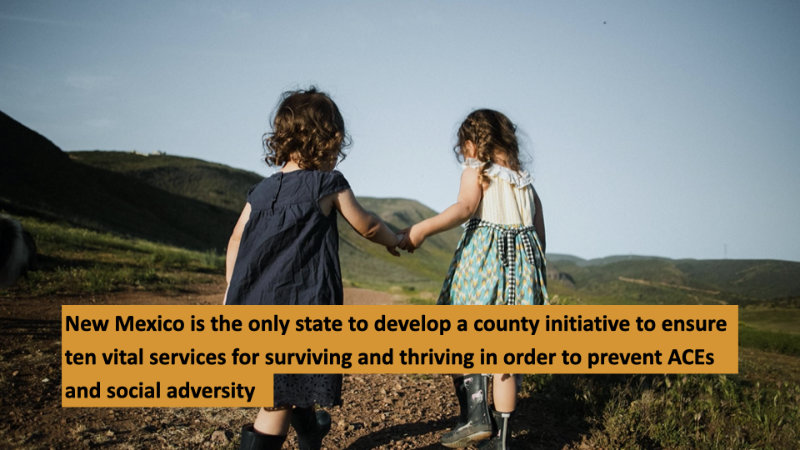
New Mexico is the only state to develop a county-based initiative to focus on preventing ACEs and social adversity by mobilizing local leadership around ensuring ten vital services for surviving and thriving. The 100% New Mexico initiative is groundbreaking in many respects, addressing historical disparities and historical trauma as it promotes the goals of health equity and social justice.
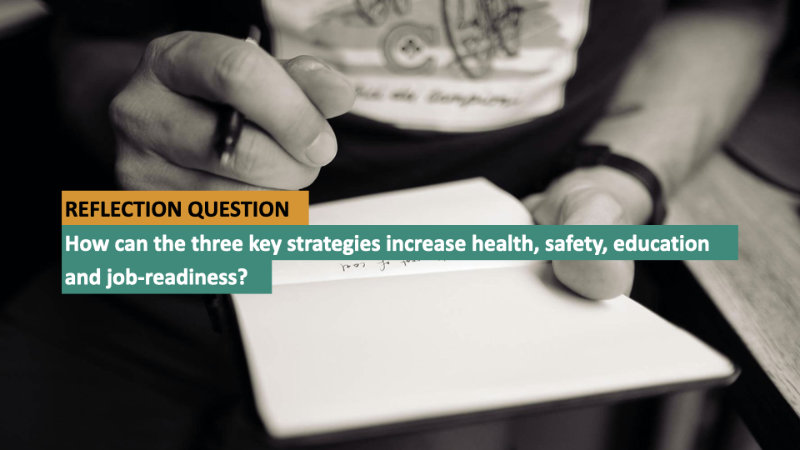
REFLECTION QUESTION: How can the three key strategies—100% Family Center, Community Schools and ensuring internet access—increase health, safety, education and job readiness in your county?

PART FOUR: New Mexico’s 100% Initiatives
Each county has customized the initiative to meet unique needs based on history, culture, and capacity to change.
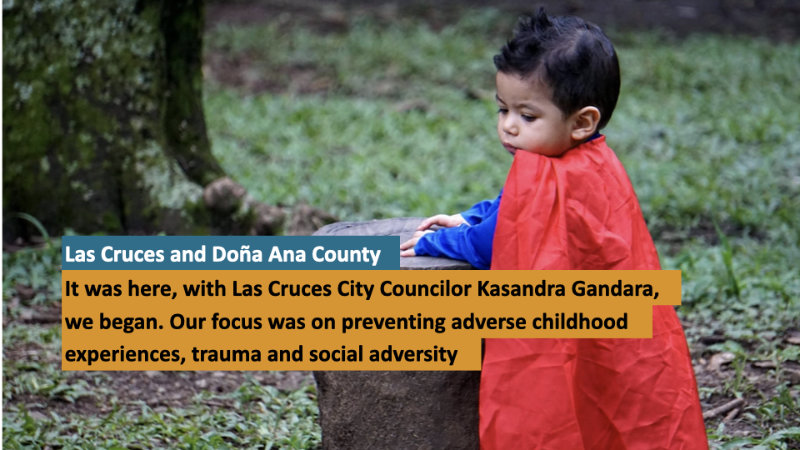
Las Cruces and Dona Ana County
It was here in 2018, our work started with Las Cruces City Councilor Kasandra Gandara. Our focus was on preventing adverse childhood experiences, trauma and social adversity. Gandara, now mayor pro tem, launched the Dona Ana Resilience Leaders with ten action teams focused on addressing barriers to services. With our work in the south, we connected with NM state senator Bill Soules who would become one of our biggest allies.
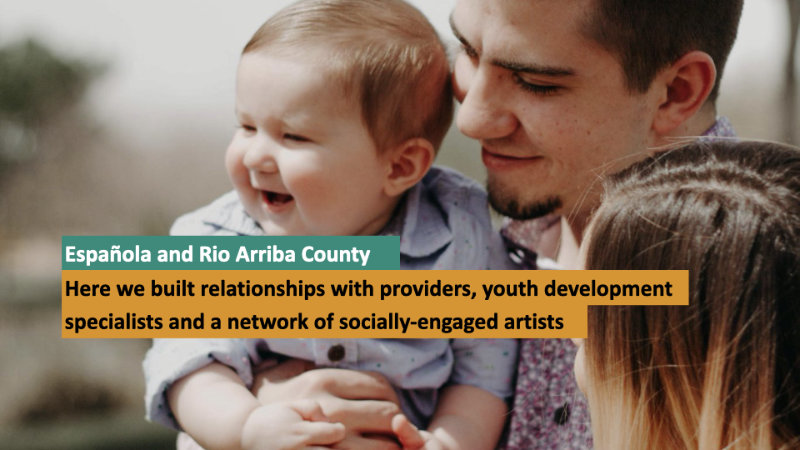
Española and Rio Arriba County
Here we focused on building relationships with youth development specialists and a network of socially-engaged artists. They launched the initiative's first 100% Mural Project to increase awareness of challenges and the power of community. Here we heard, “La cultura cures.”
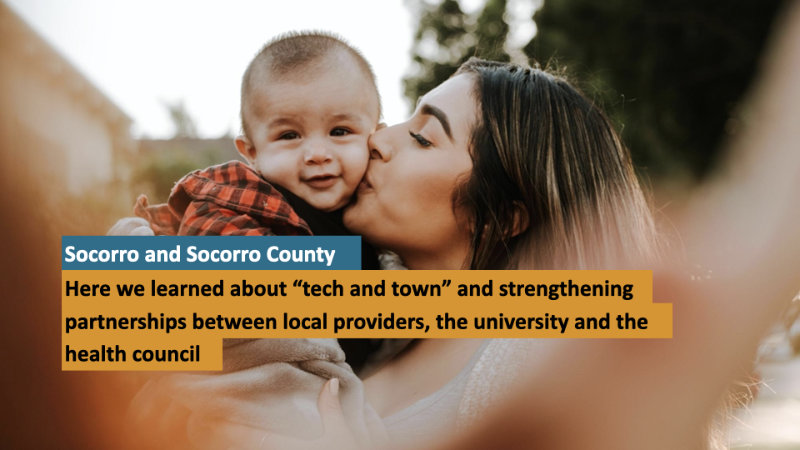
Socorro and Socorro County
Here we heard the phrase, “tech and town” that illustrated the relationship between the world class engineering school NM Tech and the residents. Our change agents in Socorro focus on strengthening partnerships between local providers, the university and the health council in the pursuit of one goal: ensuring all residents have access to vital services to thrive.
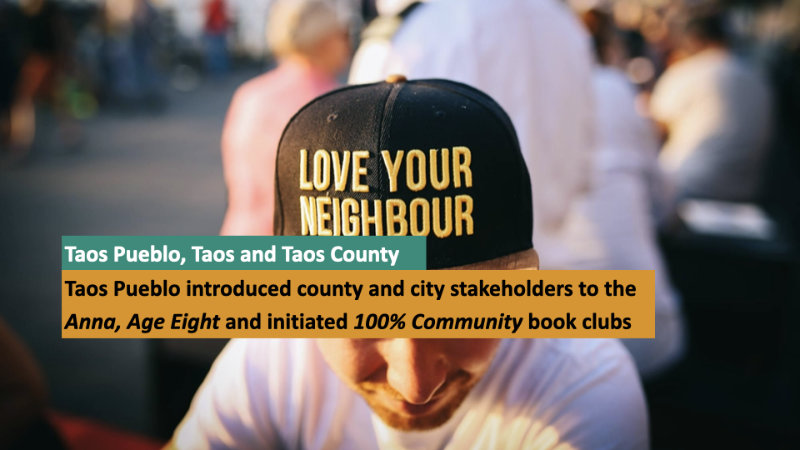
Taos Pueblo, Taos and Taos County
Taos Pueblo change agents introduced county and city stakeholders to the 100% New Mexico initiative through the sponsoring of Anna, Age Eight and 100% Community book clubs. Here three governmental entities work to collaborate to create a seamless system of care and support, working in alignment.

Las Vegas and San Miguel County
Medical director Matt Probst of El Centro Family Health, representing 20 clinics across Northern New Mexico, initiated a 100% Community book club just as the pandemic was starting. He showed how to transform in person events to web-based, inspiring the Institute to develop web-based “Power Hours.” This initiative developed ten action teams who developed the first 100% Family Services Directory and created proposals for the first 100% Family Center, along with a youth center and additional medical facilities.

Alamogordo and Otero County
Our invitation to partner with stakeholders in Otero County came from the school superintendent’s office, our NMSU campus in Alamogordo and local providers. It is here we are working with local change agents to develop a data and research group to guide development of local projects.
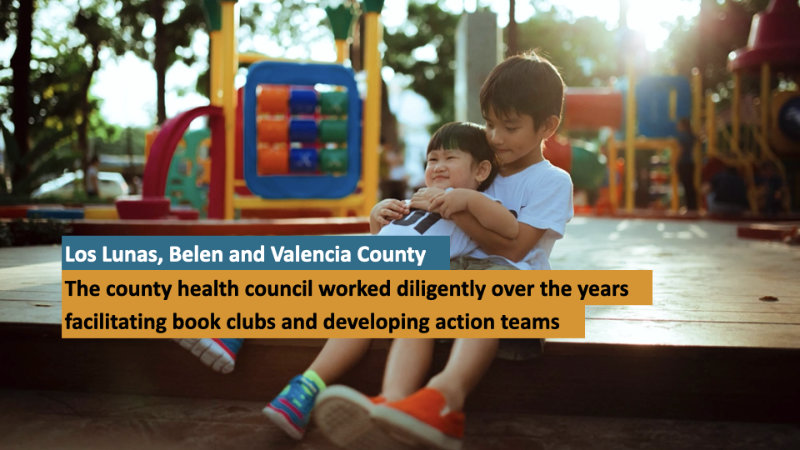
Los Lunas, Belen and Valencia County
The county health council worked diligently over the years facilitating Anna, Age Eight and 100% Community book clubs, developing action teams to guide development of the 100% Family Resource Directory, 100% Mural projects and capacity-building projects.

Santa Fe and Santa Fe County
It was Santa Fe Community College that became the first local institution to commit to surveying their students about barriers to vital services. We then partnered with a local group to survey Spanish-speaking parents to assess the magnitude of service disparities across the city and county.
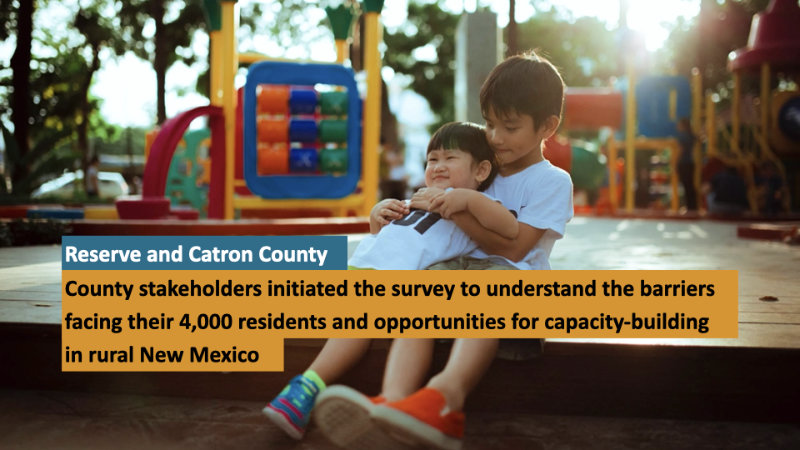
Reserve and Catron County
A county stakeholder initiated the survey to understand the barriers facing the county’s 4,000 residents and opportunities for capacity-building in rural New Mexico. Here we learned that some of our smaller counties may be overlooked by statewide initiatives because, “We just don’t have enough people.” The Institute is thrilled to be partnering with Catron to ensure 100% can thrive.
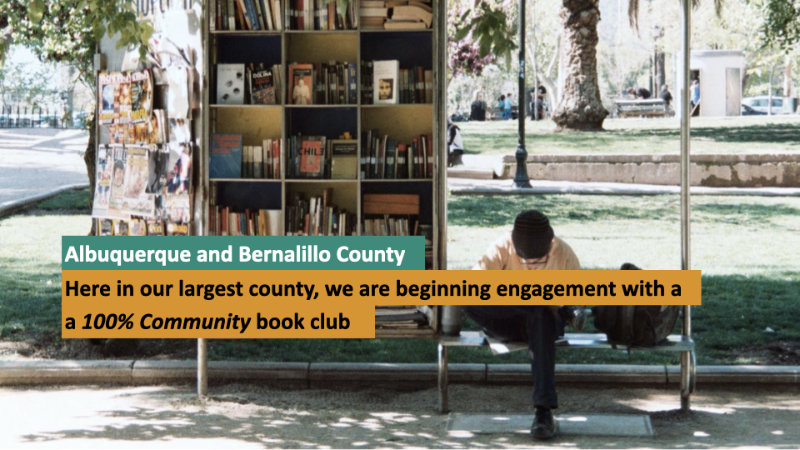
Albuquerque and Bernalillo County
The Institute has been in dialogue with stakeholders in this county for many years. It is one of the few counties in the nation to earmark county dollars for ACEs prevention projects. We now begin our first 100% Community book club in a county representing a third of the state’s population, to start the process of exploring a partnership.
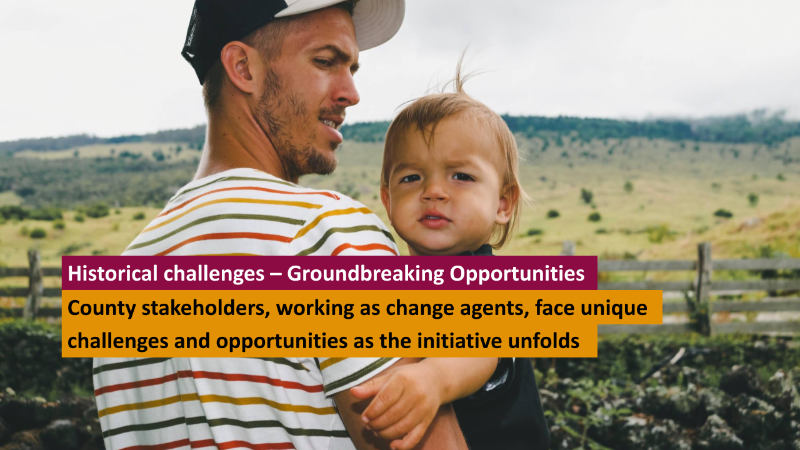
Each county faces unique challenges as it assesses barriers to vital services and explores how best to remove them. The return on investment arrives in the form of self-sufficient families, successful students, job readiness and community cohesion that creates empowerment and innovation.
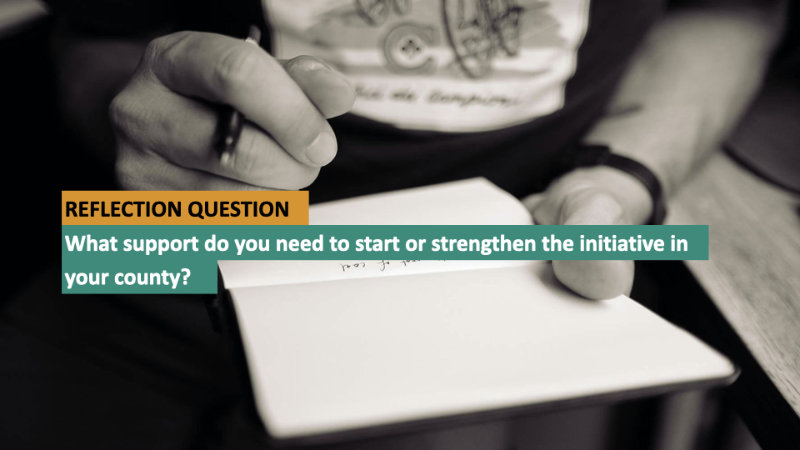
REFLECTION QUESTION:What support do you need to explore, start or strengthen the local 100% New Mexico initiative?

NEXT STEPS: Reflect on the presentation and your notes. Review the books and links to research provided. Reach out to colleagues, friends, family, neighbors and local elected leaders to discuss the 100% New Mexico initiative. We have designed this presentation so that it can be used with local elected officials within city and county government and school board members, agency leaders (representing the ten vital services), representatives from local higher education, faith-based and community-based organizations and your neighbors and friends.
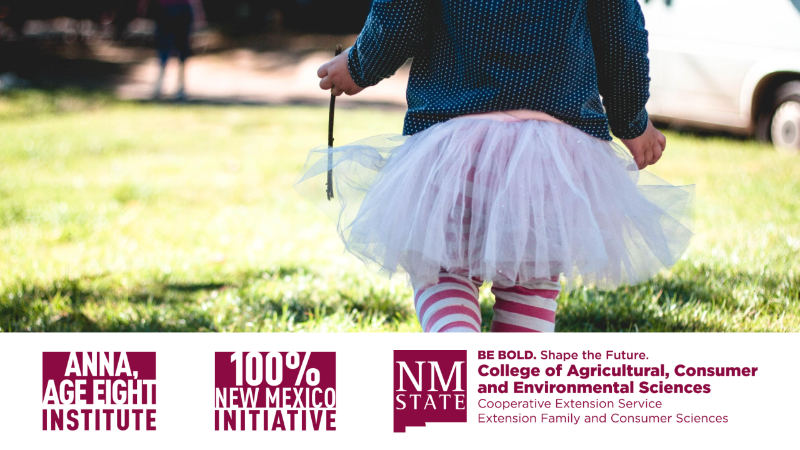
Consider registering for the next 100% Power Hour 7-part webinar series to learn more about the 100% New Mexico initiative. We hope to see you there. For any questions about the webinar series, the initiative, research guiding the process or practical steps in starting the initiative, please contact us annaageeight@nmsu.edu.
Additional Resources
Research
Explore Our Research Pages

